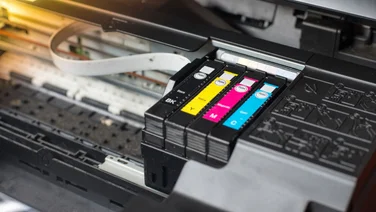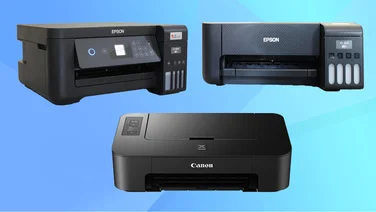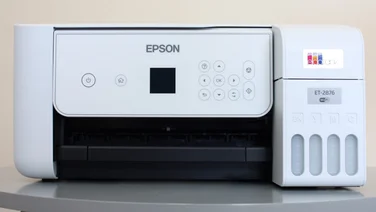To help us provide you with free impartial advice, we may earn a commission if you buy through links on our site. Learn more

Canon considers the MAXIFY MB5050, the second model we’ve looked at in the company’s new MFP range, as a small office device, and it’s certainly more highly specified than the disappointing home office MB2050. At 23 pages per minute (ppm) in black and 15ppm colour, it promises higher print speeds and has a wired Ethernet port, in addition to USB and wireless interfaces. More significantly, this model accepts high-capacity inks, which should mean lower running costs and less hassle.

There’s no draft print mode, nor borderless printing
The MB5050 is quite striking, with a front panel that looks like machined alloy despite being made from plastic. At the top, the 50-page automatic document feeder (ADF) folds shut when not in use, and the hinges of the scanner lid extend so that it can close flat on thick original documents. Unlike the range-topping MB5350, here the ADF can scan only one side of a document automatically, but the printer does support duplex printing. At the MB5050’s base is a fully-enclosed 250-sheet paper input with an output tray above it, but there’s no bypass feed for special media.

There’s a web admin interface, but in some areas the options are quite basic
The colour touchscreen is paired with just a few dedicated function buttons: it’s better than the standard screen and buttons used on the MB2050, but the screen is very small and wasn’t perfectly responsive. Like other MAXIFY models, there’s a prominent Cloud icon allowing quick access to online storage services such as Dropbox or Google Drive, and the printer supports mobile devices through AirPrint, Google Cloud Print, iOS and Android apps, and an Android print service.

Canon’s Android app covers scanning and printing, and there’s a print service for in-app printing
In certain areas, the MB5050 performs brilliantly. It’s an extremely quick mono device, delivering 25 pages of text at 21.4ppm, and a single mono photocopy in just eight seconds. 10 pages took only 48 seconds. Scans are fast at low-to-middling resolutions, with a 300 dots-per-inch (dpi) A4 capture taking just 14 seconds, but a 1,200dpi photo scan took 68 seconds, which is less competitive.
Colour print speeds were swift, but not exceptional, with our 24-page graphics test arriving at 6.3ppm. It took almost four minutes to duplex print 10 colour sides on five pages, however.

Canon’s scan interface is easy to use, whether in Advanced or this Basic mode
Scan quality was as high as we’ve come to expect from Canon, and mono prints and copies were also very good, but as with the MB2050 we were disappointed with colour prints and copies on plain paper. While the image is quite strong on the page, the colours themselves seem drab when compared to those from, say, an Epson Workforce. Print costs are very good though, at about 4.1p for a page of mixed text and graphics, of which the black component is just 0.9p.
These low costs make the MB5050 a fair choice and a more impressive device than the MB2050, but it’s still not class-leading – we’d pay another £50 or so for Epson’s WorkForce Pro WF-5620DWF. If those don’t suit your needs then check out our Best Printers 2015 and buying guide.






